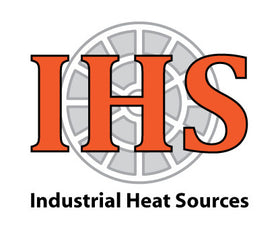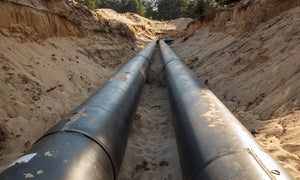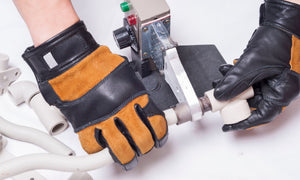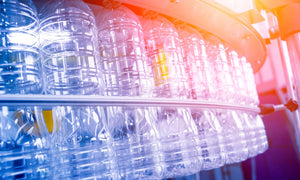How to Choose the Right Process Heaters and Controls for Food Pasteurization Applications

Band heaters, cartridge heaters, coil heaters, circulation-immersion heaters, and air heaters are used on a daily basis to pasteurize your food and beverage products to ensure their safety, quality, and a long shelf life.
Pasteurization applications involve exposing food products to a controlled heating and cooling process to eliminate harmful microorganisms, while preserving the taste, aroma, texture, color, shelf life, and nutritional value of the food product. These can include milk, fruit juices, spices, nuts, dried fruits, meats, and more.
Types of Pasteurization Applications
High-Temperature, Short-Time (HTST) Pasteurization
Also known as HTST or flash pasteurization, this application is one of the most widely used methods of pasteurization. It is performed by quickly heating and cooling a food product to a specified process temperature range and uses an indirect method of heating and cooling to transfer changes in temperature through a plate heat exchanger system. The most common method used for processing milk is called the “continuous pasteurization” process. Raw (unpasteurized) milk is pumped from a silo to a holding tank that feeds into the continuous pasteurization system. The milk continuously flows from the holding tank through a series of thin plates or heat exchangers, that heat and cool the milk to the appropriate temperatures.
This application ensures that the milk product is uniformly heated and held at a specified temperature or temperature range for a specific amount of time. For example, flash pasteurization may involve heating milk to 71.7°C for 15 seconds to eliminate heat-resistant pathogens. Since it is technically impossible to bring the milk to this exact temperature uniformly, it is safer to use a temperature range between 72°C to 74°C with a holding time of 15 to 20 seconds.
Once the heat cycle is completed, the milk product is then cooled to a specified temperature range to complete the pasteurization process. The milk product can be kept for a period of 16 to 21 days. However, for commercial reasons, some manufacturers intentionally reduce the number of days the product can be stored so that it can be packaged, delivered, and sold within a predetermined time frame. HTST pasteurization is also used to process beverages and food products such as fruit and vegetable juices, beer and wine, and cheese products.
Low-Temperature, Long-Time (LTLT) Pasteurization
Also known as LTLT or LTH pasteurization, it is commonly used in small-scale and artisanal operations. Also referred to as batch pasteurization or vat pasteurization, this process is performed with low heating and cooling temperatures.
The batch, or vat, process utilizes an airtight vessel, which allows pasteurized food products to be stored for prolonged holding periods. For example, milk is typically heated to between 63°C to 70°C with a holding time of 30 minutes, with a sudden cool down to 4°C to 5°C. Batch process methods include water-jacketed type vats, coil type vats, and water spray type processes.
Water-Jacketed Type Vats
Hot water or steam is circulated under a partial vacuum for heating and cooling of the food product through a double-walled tank. The outer wall of the jacket is insulated to reduce thermal loss. This ensures that specified hot and cold temperature ranges are maintained during the process, while the food product is slowly agitated through a moving impeller or paddle system.
Coil Type Vats
A vertical or horizontally mounted immersion or circulation heater equipped with a pump system is used to move a liquid heat medium (water, etc.) through heated coils. The food product is agitated by rotation or turning of the heated coils to provide uniform heating and cooling.
Water Spray Type
A film of hot or cold water is sprayed on the outside tank wall within the vat housing. Heating and cooling of the food product is accomplished by uniformly transferring heat and cold through the outside tank wall to the inside tank wall through thermal conduction. This process method ensures pathogens are eliminated and that the food products can be safely stored for prolonged periods of time before packaging and delivery. LTLT pasteurization is also used to pasteurize juices, cheese, yogurt, ice cream, and fruits.
Ultra-High Temperature (UHT) Pasteurization
Like HTST pasteurization, the UHT process, also known as sterilization or aseptic processing, is performed by quickly heating and cooling the food product to a specified process temperature range. However, unlike HTST pasteurization, UHT pasteurization is performed in consecutive stages. These include flash heating, flash cooling, homogenization, and aseptic packaging stages. For example, milk is first pre-heated to a noncritical temperature of 70°C to 80°C, and then quickly increased to a temperature range of 123°C to 145°C with a holding time of one to five seconds.
Flash heating is performed by using indirect heating, steam infusion, or direct steam injection process methods.
Flash Heating Stage
Indirect Heating
A heating medium (usually water) and the food product are not in direct contact with each other. Like the HTST pasteurization process, the flash heating stage is performed through plate and frame exchangers, tubular exchangers, or scraped surface exchangers.
A pressurized film of water or steam is used as the heat medium for heating the exchangers. A refrigeration unit also allows for reuse of the heating medium through condensation, which results in higher process efficiency and energy savings.
Direct Steam Injection
Also known as DSI, this process injects culinary-quality steam into a liquid stream food product such as milk. The food product is only exposed to a high temperature for a relatively short time.
Since this process uses a direct heating and cooling method, it also reduces the possibility of overheating, which ensures that the taste, texture, and color of the food product are preserved.
Steam Infusion
Steam infusion is performed by pumping a liquid or partial liquid stream food product into a large infusion chamber. It is pumped at a higher pressure through a distribution nozzle, and into a chamber filled with culinary-quality steam, which is at a slightly lower pressure than the food product. This is followed by flash cooling in a vacuum chamber where the added moisture is removed as needed. This method achieves near-instantaneous heating and cooling, with uniform temperature distribution.
Like the “Steam Injection” process method, this process also uses a direct heating and cooling method, which also reduces the possibility of overheating. Therefore, the chance of overheating is reduced, which ensures that the taste, texture, and color of the food product are preserved.
Flash Cooling Stage
After heating, the heated food product passes to a holding tube and is then pumped to a vacuum chamber, resulting in a rapid drop in temperature and vaporization. Removal of excess water is achieved through contact with steam, which results in a quality processed food product stream. The cooling rate and quantity of water removed is determined by the level of vacuum, which must be carefully calibrated to achieve optimal process results.
Homogenization Stage
Homogenization is a process designed specifically for milk food products. It is a process that uses high pressure to push the milk food product stream through a small orifice. The high pressure, combined with the small size of the orifice reduces the size of “fat globules” that are present in the milk food product, while also increasing the total surface area of smaller fat globules. This reduces the tendency of a cream forming on the top surface milk and produces a milk product with superior taste and texture.
Aseptic Packaging Stage
Requires that the packaging be sterilized prior to being filled with UHT pasteurized food product. Some products can have an unrefrigerated shelf life of six months or longer when packaged in a sterile container.
UHT processes are also used to pasteurize beverages and food products such as fruit juices, cream, condensed milk, soy milk, yogurt, wine, soups, honey, and stews.
It’s an important job and having the right heat sources and controls to do it is critical for consumer safety.
Below, we explore the key factors to consider when selecting these tools.
1. Precise Temperature Control
Temperature control is a crucial factor in the pasteurization process. Different foods may require different temperatures, so having this control is vital for ensuring the food is properly processed. The process heaters and controls you choose should allow precise temperature adjustments to meet your products’ specific heating requirements. Insufficient heating may not effectively kill or reduce the population of harmful pathogens in the food, resulting in foodborne illnesses. Overheating, on the other hand, can result in poor product quality, increased production costs, and revenue loss.
To help further guarantee a regulated temperature, digital temperature controllers such as the HCS PID Temperature Controller, Nexthermal Single Zone Temperature Controller Panel, Tempco Process Control Panel, or Tutco Closed Loop Temperature Control System can provide the process control you need.
>>Related read: Key Digital Tools for Your Equipment Lineup
2. Heat Transfer Ratings
Heat transfer ratings determine how quickly heat is distributed throughout the process. It's important to select heat sources that are ideally suited to match the size and density of the food items you're pasteurizing. Process heaters like the Tempco Tubular Flanged Immersion Heater that provide heat transfer control, or the Nexthermal Mini & Micro Coil Heaters with temperature monitoring probes can offer the flexibility you need to achieve optimal process results.
3. Uniform Heating
Uniform heating is essential to ensure that all parts of the food product are sterilized. Inconsistent heating can lead to uneven pasteurization, potentially leaving some areas unsafe for consumption. It’s key to select process heaters, such as the IHS Type 5000 Air Heater or Tempco Style RPB Infrared Panel Heater that are designed to distribute heat evenly throughout the chamber or conveyor, ensuring consistent heating throughout the entire process.
>>Related read: Top Air Heaters and Radiant Heaters for Food & Beverage Applications
4. Portability and Ease of Use
Consider the size and portability of the process heaters and fixtures, especially if your food processing facility has limited space or if you need to move the equipment between different areas. Compact and easily transportable process equipment can be more convenient to work with and adapt to various production environments or switch between food types. Some examples include the Tutco-SureHeat Max HT High-Temperature Heaters, Tutco-SureHeat Max Air Heaters, and Forsthoff Type 7500 Process Air Heaters.
5. Energy Efficiency
Energy efficiency is not only environmentally friendly but also cost-effective. Choosing energy-efficient process heaters can result in significant savings in energy costs over time. Tools like the Nexthermal Energy Efficient Cartridge Heaters, Tempco Twin Bore Quartz Tube Medium Wave Infrared Heaters, and Tempco Series KRD Vitreous Silica Quartz Tube Radiant Heaters are designed to maximize energy efficiency while still delivering effective heat.
>>Related read: 6 Hot Air Tools That Save Time and Money in the Packaging Process
6. Lasting Durability and Minimal Maintenance
Investing in durable process heaters is essential for long-term reliability and reduced downtime. Tools like the Nexthermal Medium Watt Density Cartridge Heaters, Steinel HG 5000 E Hot Air Tool, and Nexthermal Maxi Coil Heaters that are built to withstand continuous use in food processing facilities can save you money on repairs and replacements. Additionally, consider process heaters that are easy to maintain and clean, as these factors can impact the overall efficiency of your operations.
7. Advanced Safety Features
Safety should always be a top priority when working with process heaters and control systems. Choose heat sources with built-in safety features, such as overheat protection and automatic shutdown mechanisms. For example, the IHS Type 1600 Hot Air Tool touts an “automatic shut-off safety mode,” which automatically shuts the tool off when the temperature has dropped to a safe level for handling. As another example, Tempco’s Enclosure Heaters are designed to help protect the operator and equipment from accidental contact with process heaters, temperature fluctuations, condensation, and corrosion. Features like these not only protect your products and equipment but also reduce the risk of accidents in the workplace.
Optimize Your Food Pasteurization Processes With the Right Process Heaters
Food pasteurization is an important job, and it can only be successfully completed with the right process heaters and controls. If you need help finding a heat source for your product R&D and/or production applications, contact our team and a real human will assist you. We have decades of experience with process heaters, and our goal is to help you succeed.
- Robert Heater







